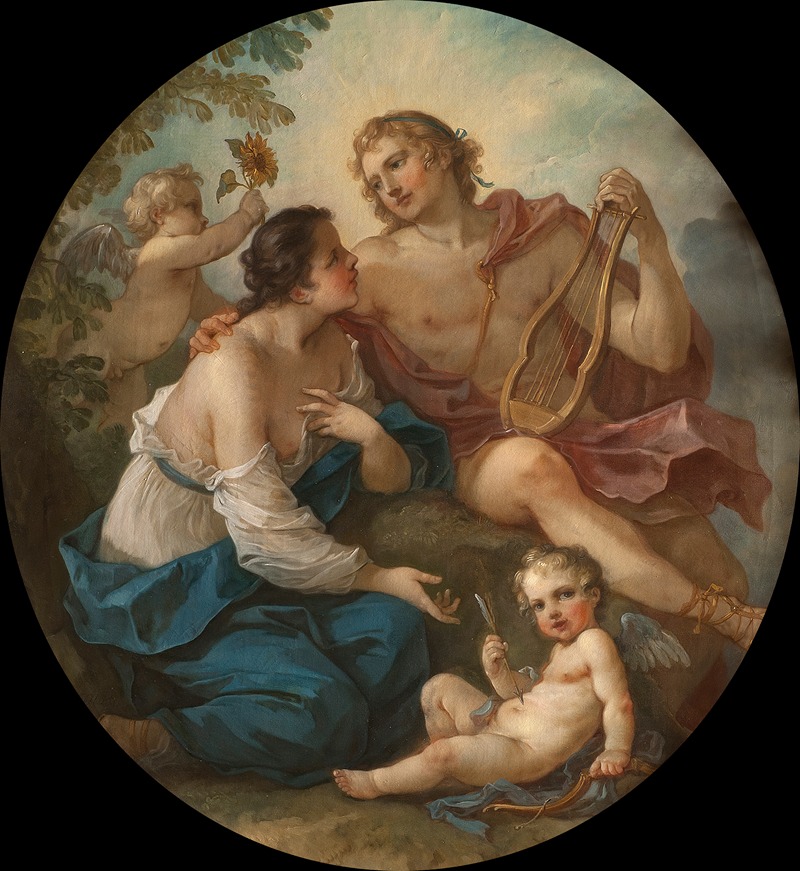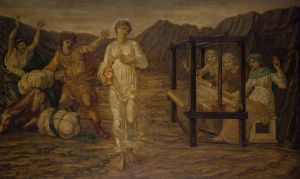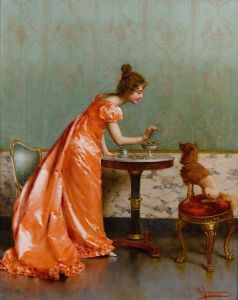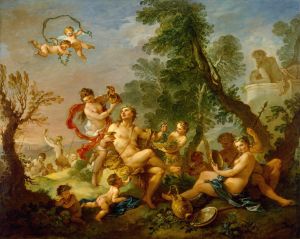
Apollo and Clythia
A hand-painted replica of Charles-Joseph Natoire’s masterpiece Apollo and Clythia, meticulously crafted by professional artists to capture the true essence of the original. Each piece is created with museum-quality canvas and rare mineral pigments, carefully painted by experienced artists with delicate brushstrokes and rich, layered colors to perfectly recreate the texture of the original artwork. Unlike machine-printed reproductions, this hand-painted version brings the painting to life, infused with the artist’s emotions and skill in every stroke. Whether for personal collection or home decoration, it instantly elevates the artistic atmosphere of any space.
Charles-Joseph Natoire was an 18th-century French painter known for his contributions to the Rococo movement. Among his works, "Apollo and Clythia" stands out as a notable example of his artistic style and thematic interests. Natoire was born in 1700 in Nîmes, France, and trained under prominent artists such as Louis Galloche and François Lemoyne. His career flourished in Paris, where he became a member of the prestigious Académie Royale de Peinture et de Sculpture.
"Apollo and Clythia" is a painting that reflects Natoire's mastery of mythological subjects, a common theme in Rococo art. The painting depicts the story of Apollo, the Greek god of the sun, music, and poetry, and Clythia, a nymph who fell in love with him. According to myth, Clythia was deeply enamored with Apollo, but her love was unrequited. In some versions of the myth, Clythia's unreciprocated affection leads her to despair, and she eventually transforms into a sunflower, eternally turning towards the sun, which is symbolic of her love for Apollo.
Natoire's depiction of this mythological tale is characterized by the delicate and ornate style typical of Rococo art. The painting likely features soft, pastel colors and intricate details, emphasizing the elegance and grace associated with the movement. Natoire's skillful use of light and shadow would have been employed to highlight the emotional intensity of the scene, capturing both the beauty and the tragedy of Clythia's unfulfilled love.
Throughout his career, Natoire was known for his ability to convey complex narratives through his art, often drawing on classical mythology and literature for inspiration. His works were celebrated for their decorative qualities and their ability to evoke the opulence and sophistication of the Rococo era. "Apollo and Clythia" would have been no exception, showcasing Natoire's talent for blending narrative depth with visual splendor.
In addition to his mythological paintings, Natoire was also renowned for his contributions to decorative arts, including his work on the interior design of the Hôtel de Soubise in Paris. His influence extended beyond painting, as he played a significant role in the development of French art during the 18th century. Natoire's legacy is marked by his ability to capture the essence of Rococo art, characterized by its lightness, elegance, and playful themes.
While specific details about the painting "Apollo and Clythia" may be limited, it remains an important part of Natoire's oeuvre, reflecting his artistic vision and the cultural context of his time. His work continues to be studied and appreciated for its contribution to the rich tapestry of art history, particularly within the Rococo movement.


















